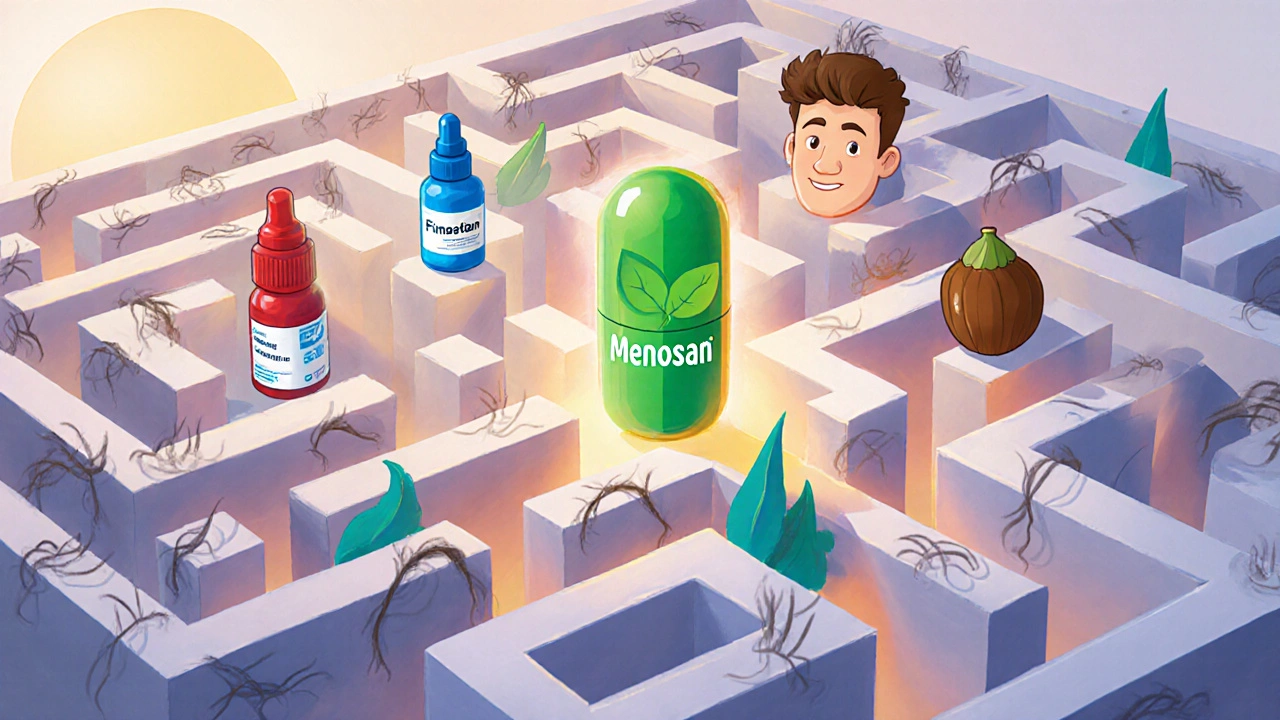Minoxidil Comparison: Finding the Right Hair Growth Solution
When looking at Minoxidil, a medication that promotes hair follicle activity and slows shedding. Also known as Rogaine, it comes in both topical liquids and oral tablets, each with its own set of strengths and usage tips.
Understanding Hair loss, the gradual thinning or shedding of scalp hair, often driven by hormonal and genetic factors. A major driver is dihydrotestosterone (DHT), which shrinks follicles and leads to Androgenic Alopecia, the most common type of pattern baldness in men and women. While minoxidil works by widening blood vessels and extending the growth phase, other agents like Finasteride, an oral 5‑alpha‑reductase inhibitor that cuts DHT production target the hormonal root cause.
Key Factors to Compare
First, look at formulation. Topical minoxidil is sold in 2% and 5% concentrations; the higher dose usually yields faster results but may increase scalp irritation. Oral minoxidil, originally a blood‑pressure drug, is prescribed in low milligram doses for advanced thinning and often shows stronger regrowth with fewer skin issues. Second, consider usage frequency. A liquid or foam applied twice daily builds consistent exposure, while an oral pill simplifies dosing to once daily.
Second, evaluate side‑effects. Topical use can cause itching, dryness, or unwanted facial hair, whereas oral minoxidil may lead to fluid retention, rapid heart rate, or occasional hypertrichosis on the body. Your health history will steer the choice; patients with cardiovascular concerns should discuss oral options with a physician.
Third, price and brand matter. Generic versions of the 5% foam, often labeled as minoxidil comparison points, can be significantly cheaper than brand‑name Rogaine, yet they deliver the same active ingredient. Kirkland Signature, for example, offers a budget‑friendly 5% foam with comparable efficacy. When comparing, factor in the cost per milliliter, the number of applications needed per month, and any subscription discounts.
Fourth, think about combination therapy. Many dermatologists recommend pairing topical minoxidil with finasteride to attack hair loss from two angles: minoxidil boosts follicle health, while finasteride reduces DHT. This synergy can improve density more than either treatment alone, and the combined regimen often shortens the time needed to see visible results.
Finally, assess treatment duration and expectations. Minoxidil typically requires at least four months of consistent use before noticeable growth appears, and benefits wane if you stop. Setting realistic milestones—such as expecting initial shedding in the first six weeks and measurable thickening by month six—helps maintain motivation.
Each of these elements—formulation, side‑effects, cost, combination potential, and timeline—forms a semantic triangle that guides a solid minoxidil comparison. By mapping your personal priorities onto this framework, you can pick the version that fits your lifestyle and health profile.
Below, you’ll find a curated list of articles that dive deeper into each of these topics. From brand‑specific reviews to detailed side‑effect charts and step‑by‑step usage guides, the posts will give you actionable insights to make an informed decision and start your hair‑regrowth journey with confidence.
Menosan (Herbal) vs Other Hair‑Loss Treatments: How They Stack Up
A clear, side‑by‑side comparison of Menosan herbal with finasteride, minoxidil, saw palmetto and other hair‑loss options, covering efficacy, safety, cost and practical tips.
